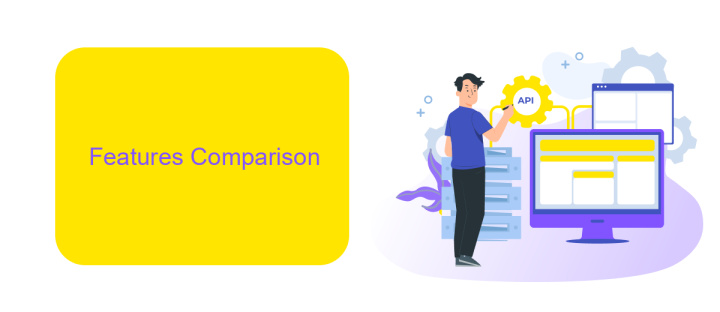MuleSoft Flex Gateway Vs Api Gateway
In the rapidly evolving landscape of API management, choosing the right gateway is crucial for ensuring seamless integration and robust security. This article delves into a comparative analysis of MuleSoft Flex Gateway and traditional API Gateways, highlighting their features, advantages, and potential use cases. Discover which solution best aligns with your organization's needs to optimize performance and streamline operations.
Introduction
In today's rapidly evolving digital landscape, businesses need robust and flexible solutions to manage their APIs efficiently. Two prominent tools that have emerged in this domain are MuleSoft Flex Gateway and traditional API Gateways. Understanding the key differences and advantages of each can help organizations make informed decisions about which solution best fits their needs.
- MuleSoft Flex Gateway: Offers a lightweight, high-performance API gateway designed for microservices and cloud-native environments.
- Traditional API Gateways: Provide comprehensive features for API management, including security, monitoring, and traffic management.
Choosing between MuleSoft Flex Gateway and a traditional API Gateway depends on various factors such as deployment environment, scalability requirements, and specific use cases. For seamless integration and automation of these services, tools like ApiX-Drive can be invaluable. ApiX-Drive simplifies the process of connecting various APIs, ensuring smooth data flow and operational efficiency. By leveraging the right gateway and integration tools, businesses can enhance their API management strategy and drive digital transformation.
Features Comparison

MuleSoft Flex Gateway offers robust features such as high-performance API management, extensive security protocols, and seamless integration with MuleSoft's Anypoint Platform. It excels in providing comprehensive analytics, detailed monitoring, and advanced policy enforcement. Flex Gateway is known for its developer-friendly environment, making it easier to design, deploy, and manage APIs efficiently. Additionally, it supports a wide range of deployment options, including on-premise, cloud, and hybrid models, ensuring flexibility and scalability for diverse business needs.
On the other hand, a traditional API Gateway focuses on routing, composition, and protocol translation. While it may not offer the same level of integration and analytics as MuleSoft Flex Gateway, it is generally easier to set up and manage, especially for simpler API use cases. For businesses looking to streamline their integrations, services like ApiX-Drive can complement an API Gateway by automating data transfer between applications, enhancing workflow efficiency without extensive coding. ApiX-Drive's user-friendly interface and powerful automation capabilities make it a valuable addition to any API management strategy.
Pricing and Licensing

When comparing MuleSoft Flex Gateway and traditional API Gateways, understanding their pricing and licensing models is crucial. MuleSoft Flex Gateway offers a flexible, subscription-based pricing model that scales with your usage and needs, making it suitable for businesses of all sizes. This model allows you to pay for only what you use, ensuring cost-efficiency.
- MuleSoft Flex Gateway: Subscription-based pricing, scalable with usage.
- Traditional API Gateways: Often have fixed pricing or tiered plans.
- Integration Tools: Services like ApiX-Drive can enhance your integration capabilities, often with their own pricing models.
Traditional API Gateways may offer fixed or tiered pricing plans, which can be less flexible and potentially more costly if your usage fluctuates. Additionally, leveraging integration tools such as ApiX-Drive can provide added value by simplifying the setup and management of integrations, often with their own competitive pricing structures. This makes evaluating the total cost of ownership essential when choosing the right solution for your business.
Use Cases

MuleSoft Flex Gateway and API Gateway serve different use cases in the realm of API management and integration. Flex Gateway is designed to provide a lightweight, flexible solution for managing APIs across various environments, including on-premises, cloud, and hybrid setups. It is particularly useful for organizations that require a highly customizable and scalable API management solution.
On the other hand, API Gateway focuses on providing a centralized entry point for managing and securing APIs. It excels in scenarios where there is a need for robust security, traffic management, and analytics capabilities. API Gateway is ideal for enterprises that need to enforce policies, monitor usage, and ensure the reliability of their API ecosystem.
- Organizations needing flexible, scalable API management across multiple environments should consider MuleSoft Flex Gateway.
- Enterprises requiring centralized API security, traffic management, and analytics should opt for API Gateway.
- For seamless integration setup, tools like ApiX-Drive can be used alongside these gateways to automate data transfer and synchronization between different systems.
Choosing between MuleSoft Flex Gateway and API Gateway depends on the specific needs of your organization. By understanding the unique strengths of each, you can make an informed decision that aligns with your API management and integration goals.
Conclusion
In conclusion, both MuleSoft Flex Gateway and traditional API Gateways offer robust solutions for managing and securing APIs. MuleSoft Flex Gateway stands out with its seamless integration with the MuleSoft ecosystem, offering advanced features such as API design, management, and analytics. It is particularly well-suited for organizations already leveraging MuleSoft’s Anypoint Platform, providing a unified experience across various integration needs.
On the other hand, traditional API Gateways are versatile and can be integrated with a wide range of platforms and services. They are ideal for organizations seeking a flexible, platform-agnostic solution. For businesses looking to streamline their integrations further, services like ApiX-Drive can be invaluable. ApiX-Drive simplifies the process of connecting various applications, enhancing the overall efficiency and effectiveness of API management strategies. Ultimately, the choice between MuleSoft Flex Gateway and a traditional API Gateway will depend on your specific requirements, existing infrastructure, and long-term integration goals.
FAQ
What is the primary difference between MuleSoft Flex Gateway and a traditional API Gateway?
Can MuleSoft Flex Gateway be integrated with other automation and integration services?
How does security management differ between MuleSoft Flex Gateway and other API Gateways?
Is it possible to monitor and analyze API performance with MuleSoft Flex Gateway?
Can MuleSoft Flex Gateway handle both RESTful and SOAP APIs?
Do you want to achieve your goals in business, career and life faster and better? Do it with ApiX-Drive – a tool that will remove a significant part of the routine from workflows and free up additional time to achieve your goals. Test the capabilities of Apix-Drive for free – see for yourself the effectiveness of the tool.

